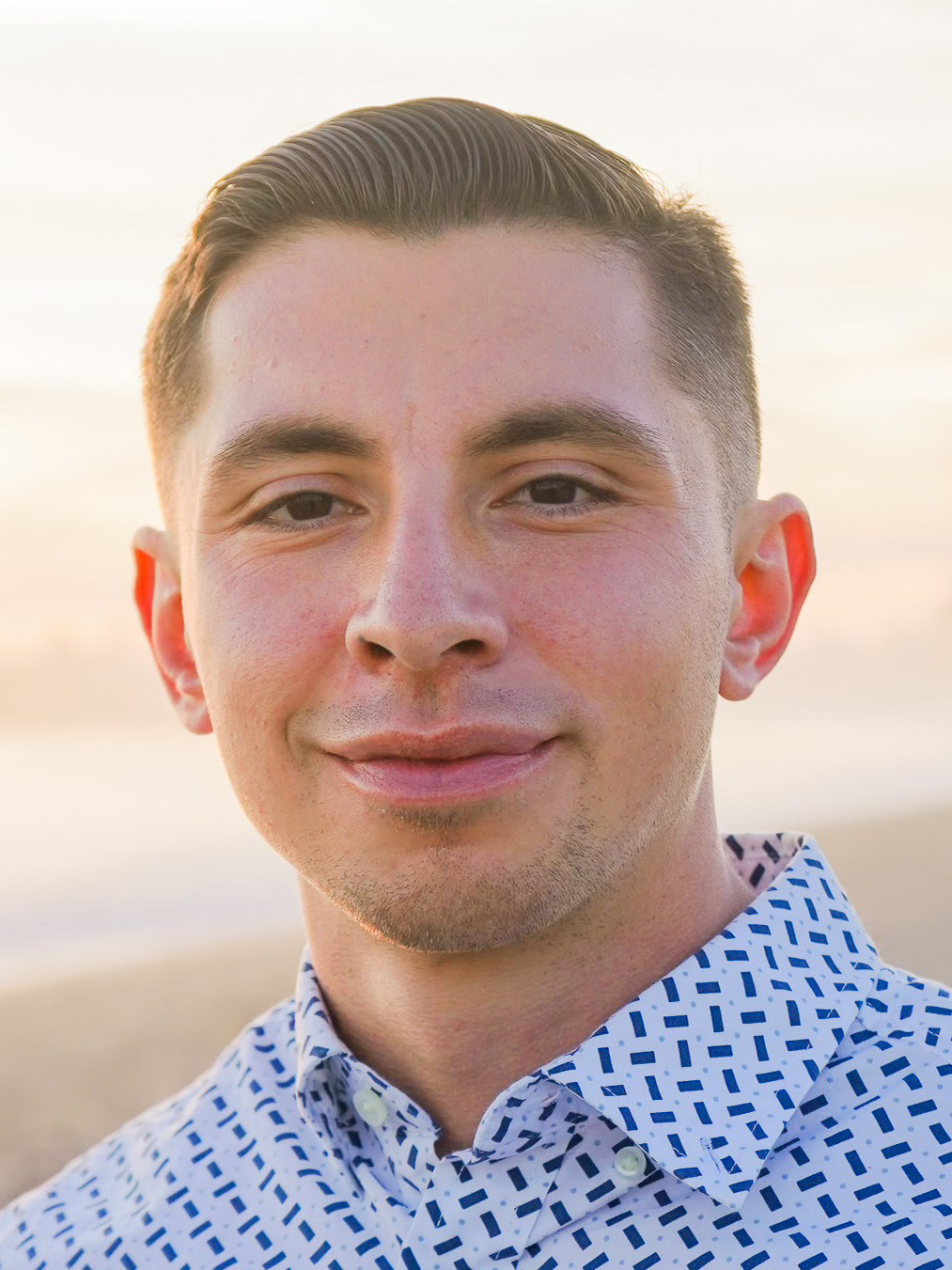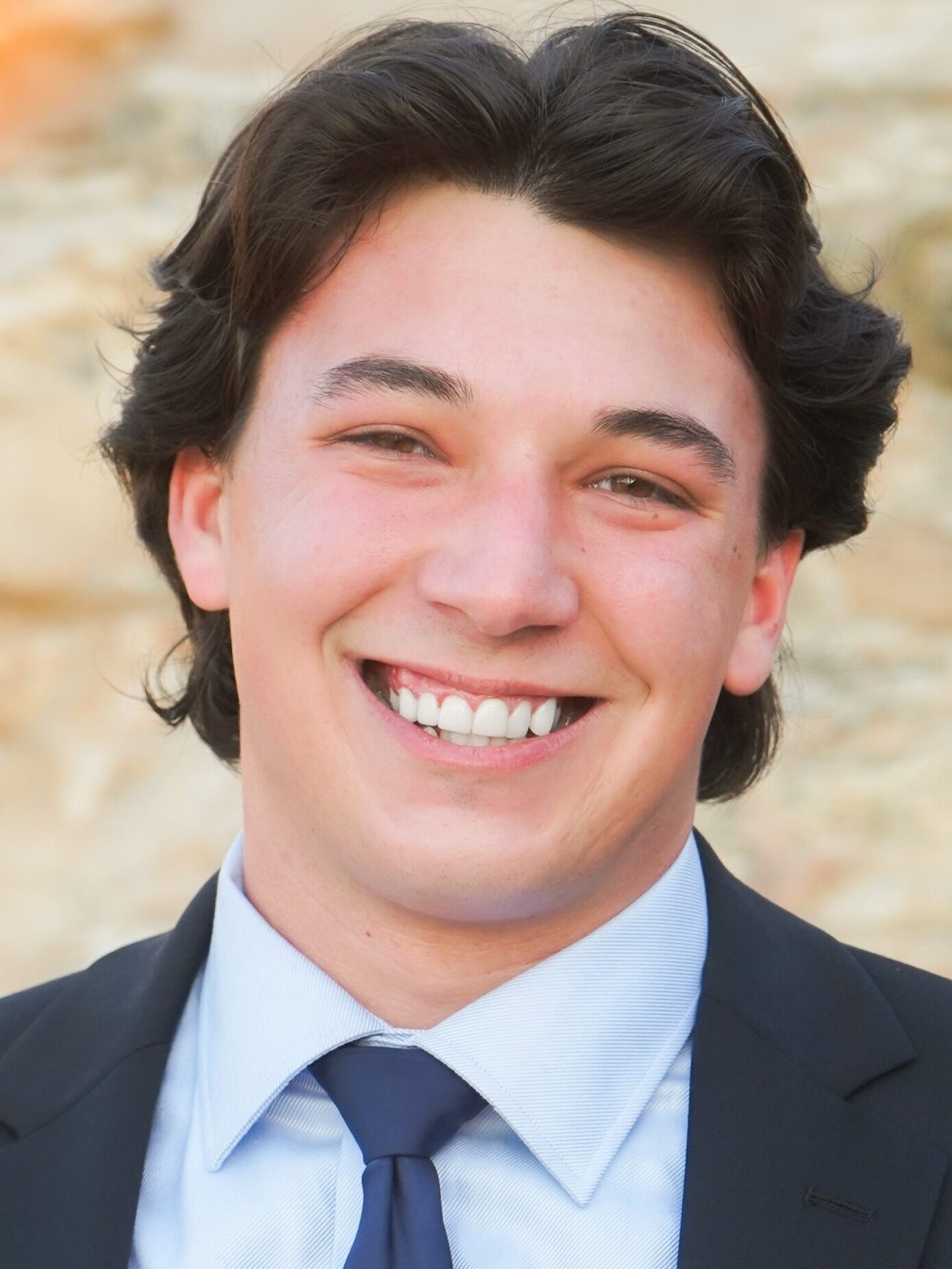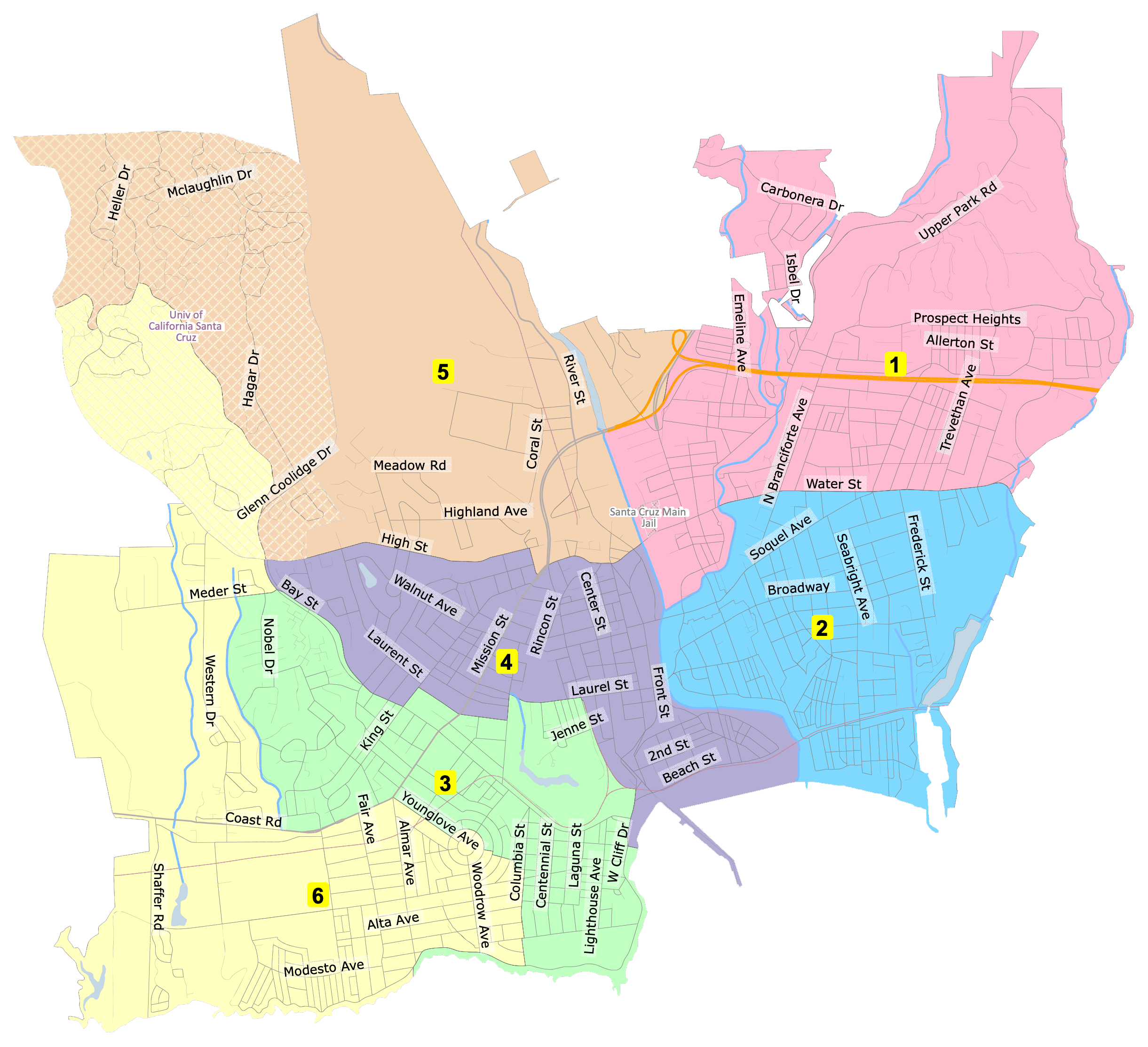Santa Cruz Local’s guide to the Santa Cruz City Council election
In the March 5 election, voters will choose from city council candidates in Districts 1, 2, 3 and 5. Six council members represent six geographical areas in the city, and there is a directly elected mayor. The Santa Cruz City Council transitioned to district elections in 2022.
District 1 Santa Cruz City Council candidates
District 1 voters will choose between David Tannaci and Gabriela Trigueiro. Read about key differences in the candidates’ positions.
District 1 includes DeLaveaga Park, Isbel and Carbonera drives, Grant Street Park, Market Street, the Prospect Heights and Upper Ocean neighborhoods, and midtown north of Water Street and as far east as Harbor High School at the city’s eastern boundary.
Read Santa Cruz Local’s guide for each candidate:
District 2 Santa Cruz City Council candidates
District 2 voters will choose between incumbent Sonja Brunner and Hector Marin. Read about key differences in the candidates’ positions.
District 2 includes the Lower Ocean and Seabright neighborhoods, the Santa Cruz Harbor, Arana Gulch and midtown south of Water Street and to the eastern boundary of the city.
Read Santa Cruz Local’s guide for each candidate:
District 3 Santa Cruz City Council candidates
District 3 voters will choose between incumbent Shebreh Kalantari-Johnson and Joy Schendledecker. Read about key differences in the candidates’ positions.
District 3 includes lower Westside south of Laurel Street and west of Chestnut Street, Neary Lagoon, West Cliff Drive from Beach Street to Columbia Street, parts of Westside and parts of upper Westside bounded by Arroyo Seco, Meder Street and Bay Drive.
Read Santa Cruz Local’s guide for each candidate:
District 5 Santa Cruz City Council candidates
District 5 voters will choose between Joe Thompson and Susie O’Hara. Read about key differences in the candidates’ positions.
District 5 includes most of the UC Santa Cruz campus, Pogonip, the Harvey West neighborhood, the El Rio Mobile Home Park and parts of upper Westside north of High Street.
Read Santa Cruz Local’s guide for each candidate:
Background on the Santa Cruz City Council
The Santa Cruz City Council is a seven-member elected body that creates city laws, sets the city’s budget and oversees city functions including the Santa Cruz Police and the Santa Cruz Water Department.
The council has the power to:
- Decide where and how much housing gets built in the city’s General Plan.
- Set policies to address homelessness.
- Hire and fire the city manager.
- Propose taxes.
Qualifications
Council candidates must be a registered qualified city voter for at least 30 days. City council candidates must live in the district they represent. Other desirable qualifications for candidates include:
- A willingness to work with other council members to craft policies.
- An ability to understand complex budgets.
- A flexible schedule: Council members often spend 20 hours per week or more on their duties.
- Broad interests: The council’s oversight includes the city’s water and wastewater systems, contracts with city employee unions, the police and fire departments, planning for growth, and public buildings and facilities including the wharf.
Compensation
Council members serve four-year terms and are paid $20,524 annually before taxes. The mayor also serves a four-year term and is paid $41,048 before taxes.
Santa Cruz City Council districts
The Santa Cruz City Council switched to a district election system in 2022. Six city councilmembers will represent six districts, and the mayor is elected directly. In the March 5 election, voters in Districts 1, 2, 3 and 5 will choose their district’s representative for the first time.
View an interactive map of Santa Cruz City Council districts.











